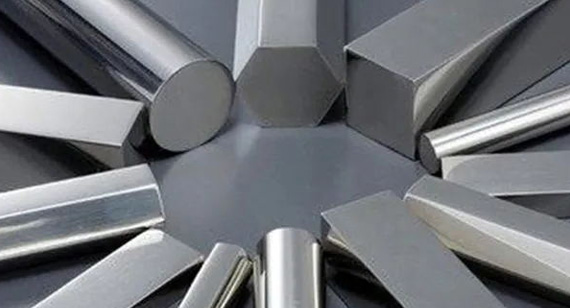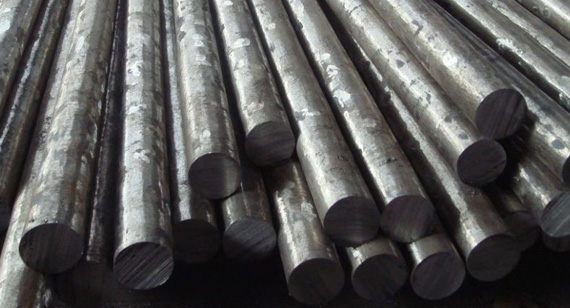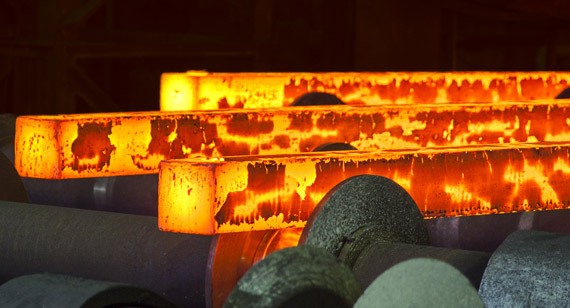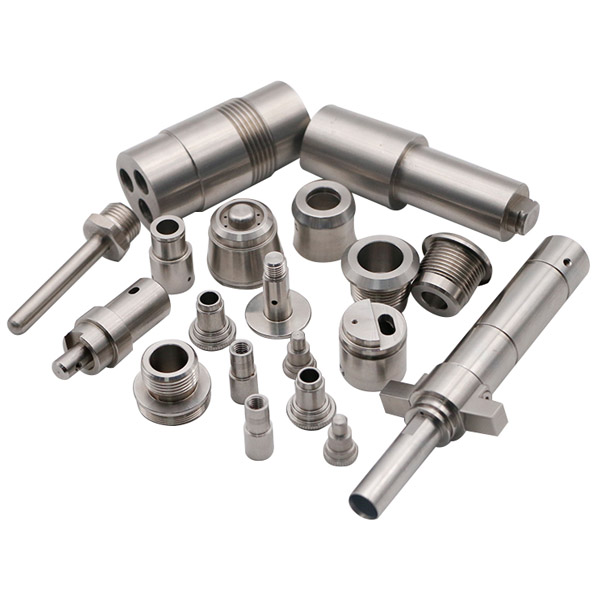15 years one-stop China custom CNC machining parts factory
 1950 |
Published by VMT at Aug 14 2024
1950 |
Published by VMT at Aug 14 2024
When it comes to CNC machining and manufacturing, selecting the right type of steel is crucial to ensuring product performance, durability, and cost-effectiveness. 1045 steel and 4140 steel are two commonly used materials, each with unique chemical compositions, mechanical properties, and ideal use cases. This guide aims to provide a thorough understanding of these two types of steel, helping readers make informed decisions based on their project requirements.
Before diving into 1045 steel vs. 4140 steel, it's important to briefly introduce the 41xx series of steels. The 41xx series is a group of alloy structural steels that, through the addition of elements like chromium, molybdenum, and manganese to carbon steel, significantly enhances the material's strength, toughness, and wear resistance. These steels are widely used in fields where high material performance is required, such as mechanical manufacturing, the automotive industry, and aerospace.
1045 steel is a commonly used medium carbon steel, also known as 45 steel. The "45" number refers to the steel's carbon content of approximately 0.45% by weight. In addition to carbon, 1045 steel also contains small amounts of manganese (usually between 0.5% and 0.8%), and sometimes small amounts of silicon and sulfur.
1045 steel is widely used in industry due to its balanced physical properties. However, due to its higher carbon content, it may be more susceptible to corrosion and stress cracking than mild steel. Therefore, additional protective measures may be required in specific applications.

1045 steel, also known as 45 steel, is a medium carbon steel. Its primary chemical components include carbon (0.43%-0.50%), silicon (0.20%-0.35%), manganese (0.60%-0.90%), phosphorus (maximum 0.040%), and sulfur (maximum 0.050%), with iron (Fe) making up the majority of its composition. The carbon content is key in determining its mechanical properties, giving 1045 steel good strength and hardness.
| Chemical Composition | 1045 | 4140 |
| Iron, Fe | 98.51-98.98% | 96.79-97.78% |
| Carbon, C | 0.45% | 0.40% |
| Manganese, Mn | 0.60-0.90% | 0.75-1.00% |
| Phosphorus, P (max) | 0.04% | 0.035% |
| Sulfur, S (max) | 0.05% | 0.040% |
Hardness and Tensile Strength: 1045 steel offers medium to high hardness and tensile strength, with tensile strength typically ranging from 570 to 700 MPa and surface hardness of 170-210HB. Surface hardness can be increased to 54-60 HRC through flame or induction hardening.
Mechanical Properties: 1045 steel has good machinability and weldability, along with high strength and toughness. The addition of silicon improves its corrosion resistance, while manganese enhances strength and toughness.
Elasticity and Ductility: 1045 steel maintains a certain level of elasticity under applied forces and possesses ductility, allowing for some plastic deformation.
Corrosion and Heat Resistance: While corrosion resistance isn't a major strength of 1045 steel, it performs steadily under general environmental conditions. Its heat resistance is moderate, making it suitable for non-extreme high-temperature environments.
Weldability: 1045 steel has relatively good weldability, but due to its higher carbon content, care must be taken to prevent cracking and brittleness during welding.
1045 steel is widely used in manufacturing due to its good mechanical properties and machinability. It is commonly used to make bolts, nuts, shafts, pins, tools, chains, and gears, as well as hammers and hammer handles. In the construction industry, 1045 steel is used to manufacture bolts, screws, and other fasteners, providing structural stability and durability.
4140 steel is an alloy steel that belongs to the chromium-molybdenum steel family, where "41" and "40" represent its carbon content of approximately 0.41% and chromium content of approximately 1.3% by weight, respectively. In addition, it contains approximately 0.20% molybdenum. 4140 steel is widely used in industry due to its good mechanical properties and heat treatment characteristics.
Due to the characteristics of 4140 steel, it is very popular in applications that require high strength and wear resistance. However, due to its higher carbon content, special preheating and post-heat treatment measures may be required when welding to avoid cracks and other welding defects.

4140 steel is an alloy structural steel with a chemical composition that includes carbon (0.33%-0.48%), silicon (Si), manganese (Mn), phosphorus (P), sulfur (S), chromium (Cr, 0.80%-1.10%), and molybdenum (Mo, 0.15%-0.25%). The addition of these alloying elements significantly improves the strength, toughness, and wear resistance of 4140 steel.
| Chemical Composition | 1045 | 4140 |
| Iron, Fe | 98.51-98.98% | 96.79-97.78% |
| Carbon, C | 0.45% | 0.40% |
| Manganese, Mn | 0.60-0.90% | 0.75-1.00% |
| Phosphorus, P (max) | 0.04% | 0.035% |
| Sulfur, S (max) | 0.05% | 0.040% |
High Tensile and Fatigue Strength: 4140 steel offers extremely high tensile and fatigue strength, with tensile strength reaching up to 795 MPa, making it suitable for applications that involve high loads and stress.
Hardness and High Ductility: After appropriate heat treatment, 4140 steel can achieve hardness levels of HRC 28 to HRC 35, while maintaining high ductility, allowing it to work under complex stress conditions.
Corrosion Resistance: 4140 steel exhibits good corrosion resistance under general environmental conditions, making it suitable for a variety of working environments.
Weldability: Compared to 1045 steel, 4140 steel's weldability is slightly inferior, but with proper welding procedures and preheating measures, satisfactory weld quality can still be achieved.
Machinability: 4140 steel has good machinability, suitable for various machining and heat treatment processes.
4140 steel is widely used in various engineering fields due to its superior mechanical properties. In mechanical manufacturing, it is used to produce bearings, gears, shafts, and other critical parts; in the automotive industry, it is used for making brake components, drive shafts, and suspension systems; in oil and gas extraction, it is used to make drill bits, casings, and other equipment; and in the aerospace sector, it is used to manufacture aircraft engine parts and structural components.
Advantages of 1045 Steel
Cost-Effectiveness: 1045 steel is less expensive than 4140 steel, making it suitable for projects with budget constraints.
Good Machinability: It is easy to cut, drill, and mill, making it ideal for CNC machining parts with complex shapes.
High Toughness: It exhibits good resistance to breaking under impact or vibration.
Disadvantages of 1045 Steel
Lower Strength: Compared to 4140 steel, 1045 steel has lower tensile strength and hardness, making it unsuitable for high-stress applications.
Welding Sensitivity: High carbon content may lead to cracking and brittleness during welding.
Limited Corrosion Resistance: In harsh environments, additional corrosion protection may be required.
Advantages of 4140 Steel
High Strength and Hardness: After heat treatment, it offers very high tensile strength and hardness, suitable for high-stress and wear-resistant applications.
Excellent Overall Performance: Good toughness, fatigue strength, and ductility ensure stable performance under various conditions.
Good Heat Treatment Capability: Heat treatment processes like quenching and tempering can precisely control its mechanical properties.
Disadvantages of 4140 Steel
Higher Cost: The addition of alloying elements and complex heat treatment processes increase production costs.
Welding Difficulty: Compared to 1045 steel, 4140 steel's weldability is lower, requiring stricter welding process controls.
Machining Difficulty: Higher hardness and toughness may increase machining difficulty and costs.
Elemental Composition
Both steels contain basic elements such as carbon, silicon, manganese, phosphorus, and sulfur, but 4140 steel also includes alloying elements like chromium and molybdenum, which significantly enhance its mechanical properties.
Rust Resistance
Both steels perform well under general environmental conditions but may require additional corrosion protection in extreme or corrosive environments.
Heat Treatment
Both steels can be heat treated to improve performance, but 4140 steel is more responsive to heat treatment, allowing for higher hardness and strength through quenching and tempering.
Mechanical Properties
Strength and Toughness: 4140 steel outperforms 1045 steel in both strength and toughness, making it suitable for more demanding applications.
Machinability: 1045 steel offers slightly better machinability, making it more suitable for CNC machining parts with complex shapes and heavy cutting.
Weldability: 1045 steel has relatively good weldability, while 4140 steel requires more stringent welding process control.
Applications: Due to differences in performance, the two steels are used in different application fields. 1045 steel is better suited for general mechanical parts and tool manufacturing, while 4140 steel is more appropriate for high-stress, high-load, and complex working conditions.
Here is a comparison chart of 1040 and 1045 hot rolled steel mechanical properties:
| 1045 Hot Rolled | 4140 Hot Rolled | |
| Tensile Strength | 82,000 psi | 90,000 psi |
| Yield Strength | 45,000 psi | 65,000 psi |
| Elongation in 2″ | 16% | 35% |
| Reduction in Area | 40% | 40% |
| Brinell Hardness | 163 | 25 |
Here is a comparison chart of 1040 and 1045 cold drawn steel mechanical properties:
| 1045 Cold Drawn | 4140 Cold Drawn | |
| Tensile Strength | 91,000 psi | 95,000 psi |
| Yield Strength | 77,000 psi | 60,200 psi |
| Elongation in 2″ | 12% | 25% |
| Reduction in Area | 35% | 35% |
| Brinell Hardness | 179 | 197 |
When choosing between 1045 and 4140 steel, it's important to consider several factors, including elemental composition, mechanical properties, weldability, material availability, machinability, heat treatment requirements, and cost. Here’s a detailed analysis of these factors:
1. Elemental Composition
1045 Steel: Composed mainly of carbon (0.43%-0.50%), silicon (0.20%-0.35%), manganese (0.60%-0.90%), phosphorus (maximum 0.040%), and sulfur (maximum 0.050%), with carbon content being the key factor for its medium strength and hardness.
4140 Steel: Although specific ranges for chemical composition were not directly provided, 4140 steel is a low-alloy, high-strength steel with alloying elements like chromium and molybdenum, which help increase strength and hardenability.
2. Mechanical Properties
1045 Steel: Offers good mechanical properties and heat treatment capabilities, but lower hardenability, making it less suitable for large, high-requirement parts.
4140 Steel: The presence of alloying elements gives it superior strength and hardenability, and it can achieve excellent comprehensive mechanical properties through tempering.
3. Weldability
1045 Steel: Has relatively poor weldability, primarily due to its higher carbon content, which increases the risk of cracking during welding. Preheating and post-weld heat treatment are required to reduce the risk of cracking.
4140 Steel: Offers better weldability but still requires careful control of the welding process to avoid defects. Due to its low carbon content, it reduces the risk of hot cracks but still requires careful control during welding.
4. Material Availability
Material availability and procurement time can influence your choice. 1045 steel may be more readily available than 4140 steel, so if you need a large quantity of material or need to quickly obtain it, 1045 steel may be more convenient.
5. Machinability
1045 Steel: Offers good machinability, suitable for manufacturing complex shapes.
4140 Steel: Offers slightly better machinability and can better withstand higher cutting forces.
6. Heat Treatment
1045 Steel: Offers a lower range of tempering compared to 4140 steel, but still provides good heat treatment capabilities. Through quenching and tempering, the steel can increase hardness and tensile strength.
4140 Steel: Responds well to tempering, resulting in a wide range of hardness and tensile strength. It is suitable for parts that require high wear resistance and toughness.
7. Cost Consideration
When selecting between 1045 and 4140 steel, it is essential to consider the overall cost, including material cost, processing cost, and potential maintenance or replacement costs.
1045 Steel: This steel is more economical due to its lower price and ease of machining, making it suitable for applications where high performance is not critical.
4140 Steel: Although more expensive, its superior mechanical properties may be more suitable for applications requiring high performance.
In summary, choosing between 1045 and 4140 steel depends on the specific application and requirements. If the performance requirements are not particularly high and cost is a primary concern, 1045 steel may be the better choice. However, if higher strength and hardenability are needed, and cost is not the only consideration, 4140 steel might be more appropriate.

1. Cold Working/Strain Hardening
Both 1045 and 4140 steels can be hardened and strengthened through cold working (e.g., cold rolling, cold drawing), but it's important to control the degree of cold working to avoid excessive hardening, which can lead to increased brittleness.
2. Annealing
Annealing helps relieve internal stresses and structural defects that may occur during processing, improving the plasticity and toughness of the steel.
3. Tempering and Quenching
4140 Steel: Often quenched and tempered to achieve desired hardness and strength. Quenching rapidly cools the steel to achieve high hardness, while tempering heats and maintains the steel to relieve quenching stress and adjust hardness.
1045 Steel: Can also be quenched and tempered, but the effects are less pronounced compared to 4140 steel.
4. Normalizing
Normalizing is a heat treatment process that helps homogenize the steel's structure and properties, eliminating segregation and refining the grain structure.

1045 Steel Applications
1045 steel is widely used across various industries due to its economy and good machinability. In manufacturing, it's often used to produce various mechanical parts, such as shafts, gears, pins, bolts, and nuts. These components serve as connectors, transmission parts, and supports in machines, requiring a certain level of strength and toughness without needing exceptionally high hardness or wear resistance.
In the construction industry, 1045 steel is also used for structural components like connectors, supports, and reinforcements. These components need to withstand certain loads and stresses, and 1045 steel's strength and toughness meet these requirements. Additionally, its good machinability allows for easy cutting, welding, and installation on construction sites.
4140 Steel Applications
4140 steel's high strength, hardness, and excellent overall properties make it crucial in high-end manufacturing and key component production. In the automotive industry, 4140 steel is commonly used to produce critical components like engine parts, transmission systems, and suspension systems. These parts must endure high temperatures, pressures, and stresses, and 4140 steel's superior performance ensures the stability and durability of these components.
In aerospace, 4140 steel plays a significant role in making engine parts, landing gear, and airframe structures. These components require not only high strength and toughness but also excellent fatigue and corrosion resistance to withstand extreme working conditions and complex stress states.
Additionally, 4140 steel is widely used in oil and gas extraction, heavy machinery manufacturing, and mold making. In these industries, the high strength, hardness, and wear resistance of 4140 steel make it an ideal choice for manufacturing high-load, high-stress components.
As a professional CNC machining factory, VMT is committed to providing high-quality processing services for 1045 and 4140 steel. With advanced CNC machining equipment and a professional technical team, we offer a one-stop solution from design and machining to assembly. Whether it's complex mechanical parts or precision mold making, we ensure product quality and performance with our craftsmanship and strict quality control.
During processing, we focus on material selection and heat treatment control to ensure mechanical properties and dimensional accuracy. We also provide customized CNC machining services, designing and producing according to customers' specific needs to meet application requirements across various industries and fields.

In conclusion, 1045 and 4140 steels are widely used in CNC machined parts manufacturing due to their unique chemical composition, mechanical properties, and application scenarios. When selecting steel, it's crucial to consider factors such as material cost, machinability, mechanical properties, and weldability based on the specific project requirements. With proper selection and scientific processing, the performance advantages of the steel can be fully utilized, ensuring that product quality and performance meet the necessary standards.
As a professional CNC machining factory, VMT continues to provide top-quality processing services for 1045 and 4140 steel, helping customers achieve greater success in the competitive market.
Which Steel Offers Better Value for Money?
The value for money depends on the specific application scenario and requirements. If the project does not require high strength and hardness, and the budget is limited, 1045 steel may offer better value. However, if the project demands high strength and hardness and needs to withstand high stress and complex conditions, 4140 steel might be more suitable.
Which is Easier to Machine: 1045 or 4140 Steel?
Generally, 1045 steel is easier to machine than 4140 steel. Due to its lower hardness and strength, 1045 steel requires less cutting force, leading to less tool wear and reduced workpiece deformation during machining. In contrast, 4140 steel, with its higher hardness and strength, requires greater cutting force and more precise machining techniques.
Is 1045 Steel Suitable for Automotive Parts?
1045 steel is suitable for automotive parts that do not require high strength and hardness, such as connectors, supports, and general transmission parts. However, for components that need to withstand high stress and complex conditions, such as engine parts, transmission systems, and suspension systems, it is recommended to use higher-performance steel like 4140.
How to Differentiate Between 4140 and 1045 Steel?
4140 and 1045 steel can be distinguished by chemical composition analysis, mechanical property testing, and heat treatment response. Observing the steel's appearance and color may provide clues, but this method is not accurate or reliable. The most reliable method is through professional testing equipment and laboratory analysis to determine the steel type and properties.
What Are the Uses of 1045 Steel?
1045 steel is widely used in various fields of manufacturing, including machinery manufacturing, construction, and tool making. It is commonly used to make shafts, gears, pins, bolts, nuts, and other mechanical parts, as well as hammers, wrenches, and pliers. In construction, 1045 steel is also used for structural components like connectors and supports. Its good plasticity and weldability make it ideal for welded applications, such as bridge and pipeline construction.
Is There a Steel Better Than 4140?
Several steels may offer better performance than 4140 in specific aspects, depending on the application's requirements, such as strength, toughness, corrosion resistance, and machinability. For example, some high-strength low-alloy (HSLA) steels or specialty alloy steels may exhibit superior performance in certain environments. However, no single steel is universally superior to all others; the choice of steel should be based on the specific application scenario and needs.
Which is Stronger: 4130 Steel or 4140 Steel?
4140 steel is generally stronger than 4130 steel. Specifically, 4140 steel has a tensile strength of ≥1080 MPa and a yield strength of ≥930 MPa, while 4130 steel's strength values are relatively lower. This is because 4140 steel contains higher carbon content and other alloying elements (such as chromium and molybdenum), which help increase its strength and hardenability.
What is the Chinese Equivalent of 4140 Steel?
The Chinese equivalent of 4140 steel is 42CrMo. This material belongs to the alloy steel category and offers high strength and toughness, with good hardenability. It is suitable for manufacturing large and medium-sized plastic molds that require certain strength and toughness.
What is the Equivalent of 1045 Steel?
1045 steel is equivalent to China's national standard 45# steel, a medium-carbon structural steel with good hot and cold processing properties and mechanical performance. Due to its low cost and widespread availability, it is widely used in the industrial machinery manufacturing industry.
Which is Stronger: 1018 or 1045 Steel?
1045 steel is stronger than 1018 steel. Specifically, 1045 steel has a tensile strength of approximately 570-700 MPa, while 1018 steel has a tensile strength of around 410 MPa. This indicates that 1045 steel can withstand greater tensile forces under the same conditions.
Is 1045 Steel Suitable for Shafts?
1045 steel is suitable for shafts to some extent, but its hardenability is relatively low, making it less ideal for large-section or highly demanding workpieces. If the shaft's working environment requires high strength, wear resistance, and impact resistance, other higher-performance steels like 4140 may need to be considered.
Which Steel Has Better Hardenability: 1045 or 4140, and Why?
4140 steel has better hardenability than 1045 steel. This is because 4140 steel contains alloying elements like chromium and molybdenum, which enhance the steel's hardenability and ability to achieve uniform hardness after quenching. In contrast, 1045 steel has lower hardenability, making it challenging to obtain uniform hardness distribution after quenching.
Will 4140 Steel Rust?
4140 steel can rust, especially when exposed to humid or corrosive environments. While 4140 steel contains elements like chromium and molybdenum that can improve its corrosion resistance, these elements do not completely prevent rusting. Therefore, appropriate anti-corrosion measures are necessary when using 4140 steel to extend its service life. However, compared to some ordinary steels, 4140 steel may have certain advantages in corrosion resistance.
